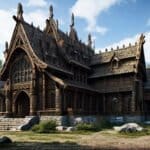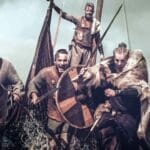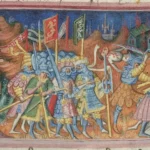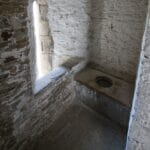# King William Island: Echoes of Exploration and Inuit Wisdom in the Arctic
King William Island, nestled within the Arctic Archipelago, is more than a geographical location; it's a repository of history, resilience, and the enduring wisdom of the Inuit. This remote island in the Kitikmeot Region of Nunavut, Canada, has witnessed human ambition, devastating tragedy, and, ultimately, the triumph of cultural preservation. Its name, rendered in Inuktitut as Qikiqtaq, hints at a deep connection to the land held by the Inuit for centuries. Previously known as King William Land, the island serves as a stark reminder of the allure and perils of Arctic exploration, most notably through its association with the ill-fated Franklin Expedition.
## A Geographical Overview of King William Island
Spanning between 12,516 km2 (4,832 sq mi) and 13,111 km2 (5,062 sq mi), King William Island ranks as the 61st-largest island in the world and Canada's 15th-largest. Yet, its significance far outweighs its size. The island is strategically positioned, separated from the Boothia Peninsula by the James Ross Strait to the northeast and the Rae Strait to the east. To the west lies the Victoria Strait, with Victoria Island beyond. The Simpson Strait, south of the island, contains Todd Island, with the Adelaide Peninsula further south. Queen Maud Gulf is situated to the southwest.
The island's coastline is dotted with notable locations. Starting from the northern tip and moving counter-clockwise, these include Cape Felix, Victory Point, Gore Point at the mouth of Collinson Inlet, Point Le Vesconte, Erebus Bay, Cape Crozier, Terror Bay, Irving Islands, Washington Bay, Cape Herschel, Gladman Point, the entrance to Simpson Strait, Todd Islets, Gjoa Haven, Matheson Peninsula, Latrobe Bay, Cape Norton at the mouth of Peel Inlet, Matty Island, Tennent Islands, and the Clarence Islands before returning to Cape Felix.
King William Island is known for its tundra climate (Köppen: ET), characterized by long, cold winters and short, cool summers. Precipitation is low, classifying it as a "cold desert." The island also hosts a substantial population of barren-ground caribou, which spend their summers there before migrating south across the sea ice in the autumn.
## Historical Footprints: Inuit Heritage and European Exploration
King William Island has been the ancestral home of the Inuit, who have adapted to the extreme conditions for generations. Their traditional knowledge and skills have been crucial for survival in this Arctic environment.
European contact began in 1830 when British explorer James Clark Ross named it "King William Land" in honor of King William IV. Ross initially believed it was a peninsula. George Back, another Arctic explorer, recognized it as an island in 1834 after viewing its south shore from Chantrey Inlet.
### The Franklin Expedition Tragedy
The most notable chapter in the island's history is undoubtedly its connection to Sir John Franklin's 1845 expedition. Aiming to chart the Northwest Passage, Franklin's two ships, HMS Erebus and HMS Terror, became trapped in sea ice northwest of the island in 1846. The crew abandoned the ships, and most perished from exposure, starvation, and illness while attempting to trek south. Two of Franklin's men were buried at Hall Point on the island's south coast.
For many years the expedition was considered lost, with numerous searches failing to locate the ships. But on June 29, 1981, a team led by Canadian archaeologist Owen Beattie discovered 31 pieces of human bone fragments at Booth Point, on the southern tip of the island. Then, on September 9, 2014, Canadian Prime Minister Stephen Harper announced that the Victoria Strait Expedition had found one of Franklin's ships in shallow waters south of King William Island. The wreck was remarkably well-preserved, with side-scan sonar revealing the deck planking. By October, it was identified as HMS Erebus. The second vessel, HMS Terror, was found in 2016 in Terror Bay, off the southwest coast of King William Island.
### Amundsen's Arctic Sojourn
In 1903, Norwegian explorer Roald Amundsen, also seeking the Northwest Passage, sailed through the James Ross Strait and found a natural harbor on the island's south coast. He spent the winters of 1903–1904 and 1904–1905 there, learning Arctic survival skills from the local Netsilik Inuit. Amundsen used his ship Gjøa as a base for explorations in the summer of 1904, journeying by dogsled to the Boothia Peninsula and the North Magnetic Pole. He departed in August 1905 after spending 22 months on the island. The harbor where he stayed became the island's only settlement, Gjoa Haven. The skills Amundsen acquired from the Inuit proved invaluable during his later expedition to the South Pole.
### George Porter: A Life Bridging Cultures
George Porter, born on a whaling ship near Herschel Island in 1895 to Mary Kappak and W.P.S. Porter, played a significant role in the island's more recent history. Schooled in Alaska, he worked as a sailor, reindeer herder, and even served in the U.S. military during World War I. Later, he guided Royal Canadian Mounted Police (RCMP) commander Henry Larsen on numerous trips. George Porter ultimately settled in Gjoa Haven, where he managed the Hudson's Bay Company trading post for 25 years.
## Gjoa Haven: The Heart of King William Island
Gjoa Haven, the island's only community, has a population of 1,349 (as of the 2021 census). It serves as a hub for Inuit culture and a base for Arctic research. The town is named after Roald Amundsen's ship, reflecting its historical significance.
## The Enduring Legacy of Inuit Oral History
One cannot discuss King William Island without emphasizing the critical role of Inuit oral history in understanding its past. For generations, the Inuit passed down accounts of the Franklin Expedition, providing details that remained unknown to the outside world for decades. These stories, rich in detail and cultural context, offered vital clues to the location of the lost ships and the fate of their crews.
Louie Kamookak, an Inuit historian and educator, dedicated his life to collecting and preserving these oral histories. His work was instrumental in the eventual discovery of the Erebus and Terror, demonstrating the power of traditional knowledge and the importance of collaboration between Indigenous communities and Western researchers.
## The Franklin Expedition's Artefacts and Arctic Research
The wrecks of HMS Erebus and HMS Terror have become invaluable archaeological sites. Numerous artifacts have been recovered, providing insights into the lives of the crew members, their equipment, and their final struggles. Ongoing research aims to uncover more details about the expedition's demise and the environmental conditions that contributed to the tragedy.
## King William Island Today: Balancing Preservation and Progress
Today, King William Island faces new challenges, including climate change and the increasing interest in Arctic resource development. Balancing the need for economic development with the preservation of the island's unique cultural and environmental heritage is paramount. Collaborative efforts involving the Inuit community, government agencies, and researchers are essential to ensure a sustainable future for King William Island.
King William Island stands as a testament to the power of human exploration, the resilience of the Inuit people, and the importance of preserving both cultural heritage and the fragile Arctic environment. Its story continues to unfold, offering invaluable lessons for future generations.
Latest posts by Lola Sofia (see all)
- Unlock Ancient Roman Jewelry’s Secrets: History, Materials, & Symbolism Revealed - August 14, 2025
- Unveiling Ancient Roman Mythical Creatures: Legends, Powers & Origins Defined for Today’s Enthusiast - August 14, 2025
- Unlock Ancient Secrets: Ancient Roman Attire Women, Status, & Materials [Guide] - August 14, 2025















